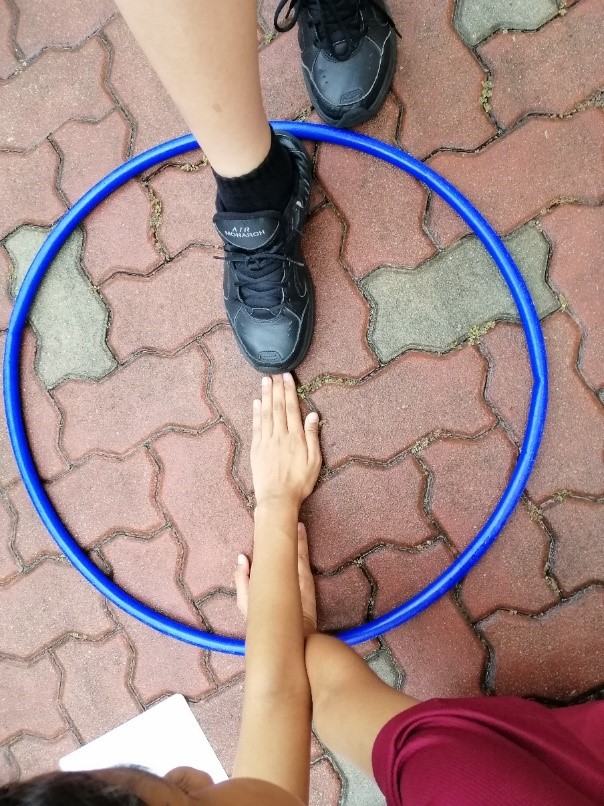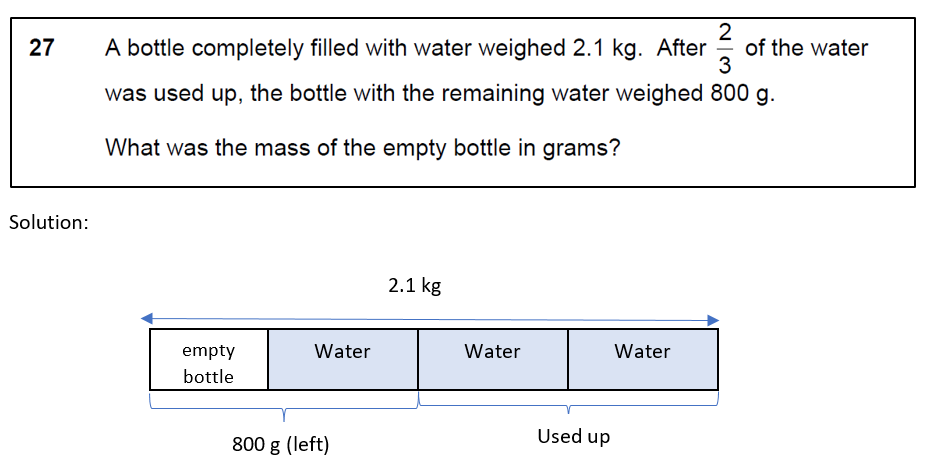|
Our Mathematics panel |
|
|
Ms Chan Min Lie Mathematics master teacher
Ms Chan was a primary school teacher for 20 years before her appointment as Master Teacher at the Academy of Singapore Teachers. She is an advocate for motivating teachers to cultivate their students’ love for Mathematics. She is currently involved in teachers’ professional development.
|
 |
|
Dr Ridzuan Abd Rahim Mathematics curriculum specialist
Dr Ridzuan has been a Mathematics educator for over 25 years. He is currently involved in Mathematics curriculum development as well as the professional development of Mathematics teachers.
|
.jpg) |
Teaching, learning and assessment of Mathematics
Q1: The way my child learns Mathematics is so different from when I was in primary school. Is there a need for such change?
Dr Ridzuan: You are right to observe that your child’s learning of Mathematics in school is not the same as compared to when most of us were in school.
In the past, when computers were not prevalent and there was no Internet, the emphasis of education was on allowing students to acquire as much knowledge as possible. For Mathematics, there used to be greater focus on memorising mathematical facts and to be computationally fluent, for example, with the four operations of addition, subtraction, multiplication and division.
The emphasis has now shifted to learning how to access, evaluate and use knowledge as well as to make connections to real life. Our students must learn to be fluent with the four operations within the context of solving real-world problems, because just knowing some information or knowing how to do some calculations or follow a set of procedures will no longer get our students through the more complex and interconnected world they are going to live in.
To be adequately prepared to find solutions in real life, they must learn to understand a problem and explore ways to solve the problem. We encourage them to view setbacks constructively as a natural part of learning, and adopt a fail-try-fail spirit in problem-solving. At primary level, the contexts of problems posed are appropriately simplified and students are taught various ways to approach the various types of problems.
Our Mathematics curriculum is carefully organised to enable students to develop the necessary understandings and skills in a systematic and age-appropriate way. We ensure that the learning outcomes are responsive to their future needs. This includes ensuring that the curriculum develops higher-order skills, like the application of concepts and skills to new contexts. Furthermore, these higher-order skills are widely accepted by educators across the world as important skills.
 In this circle lesson, students attempted to find the area inside the hula hoop with no measurement tools given, hence the use of their hands and feet to estimate the diameter of the circle (above). Students can then better appreciate the concept of ‘units of measurement’ and estimation.
In this circle lesson, students attempted to find the area inside the hula hoop with no measurement tools given, hence the use of their hands and feet to estimate the diameter of the circle (above). Students can then better appreciate the concept of ‘units of measurement’ and estimation.
Q2: I understand that our syllabus needs to evolve with the times, but the questions I see in my child’s examination papers have grown too complex and challenging.
Ms Chan: I understand how some parents may feel that the problems are getting more difficult because they had never been taught during their school days to approach problem-solving this way. What they may not see on a day-to-day basis is that their children are taught differently today and are being supported by their teachers to progressively work through these problems in a systematic way.
Look into Mathematics classrooms today and you will see students exploring maths knowledge using manipulatives and technology either individually or in a group. For example, with the fractions disc, students can see that 3/6 is equivalent to 6/12 when they overlay the parts and see that the parts are equal. As they explore with more fractions, they are gradually guided to see the pattern that to find the equivalent fractions of a fraction, one will have to multiply the numerator and denominator of the fraction with the same number.
Students are not only guided to see the patterns in Mathematics, but to also develop a deeper understanding and curiosity for the subject. This way, they can sharpen their critical thinking and problem-solving skills, which will in turn help them to develop different approaches in tackling a few of the more novel and challenging questions .
To further support student learning, our teachers learn new ways to help their students to sharpen their critical thinking and problem-solving skills. To motivate our students, there is also a healthy dose of fun and play injected into group activities.
Dr Ridzuan: Examinations serve important functions in supporting the students’ learning. In schools, they assess the readiness of students for learning at the next level, and surface learning gaps so that teachers are able to close them with the students. For instance, at the end of Primary 4 and Primary 5, information on their competencies allows schools to offer intervention or courses for students to learn at the level that best suits their learning needs.
As a result, in every examination, there will be an appropriate balance of easy, moderate and challenging questions in order to determine the levels of mastery of the subject for students of different abilities. In Mathematics examinations, we assess our students’ competency in a range of skills, such as computational skills, mathematical concepts, and processes and problem-solving skills and we are not expecting all our students to be able to solve all questions, or to be equally proficient across all the range of skills. However, students should be able to confidently solve the questions that assess baseline learning outcomes, if a strong foundation has been laid.
.jpg)
(Clockwise): Students learning counting, addition and fractions using various manipulatives, games and fun.
Q3: Our Mathematics exams are too difficult for our students. There is also a lot of emphasis on word problems. Shouldn’t Maths focus mainly on the computation of numbers and application of formula rather than language ability?
Dr Ridzuan: On the point of word problems, even at the primary school level, some understanding of mathematical terms is essential for the learning of mathematical contexts or situations. We also know that in life, we are typically not presented with mathematical problems expressed in symbols or equations to solve. These problems often come in descriptions that require us to distil the mathematical issue underlying them. Having said that, we agree that language should not be a hindrance in the learning of maths, and word problems should be phrased simply and in short sentences, to fall within the general language ability of the student cohort.
Q4: Are school examinations marked more strictly than at the PSLE? It seems to be the case although some teachers say they are marked the same way.
Dr Ridzuan: We adopt similar marking principles for school-based assessments as well as for national examinations. Marks are awarded to key steps that support the test objective(s) of each examination question.
The purpose of school-based assessments is to enable teachers to help their students learn and continually close their learning gaps. Hence, in some situations, some schools may appear to adopt a stricter approach in their marking for school assessment because they are looking for specific presentations or approaches in the students’ responses to reinforce practices that have been taught in class. We have been working with schools to review their assessment practices so that there is better alignment with the marking principles practised at the national examinations. It is important for parents to maintain open communication with the schools, and seek clarification where necessary to best support their child’s learning.
At the national examinations, students are awarded marks so long as their methods are mathematically sound and their workings are presented in a clear and systematic manner that demonstrate correct understanding.
Is the Model Method so model?
Q5. The Model Method is not a concept that many students can grasp easily as it is more analytical. As an adult, I find the Model Method harder to learn than algebra. Furthermore, this method is not used in further education. Yet, schools are advocating this method.
Dr Ridzuan: Developmental theories of learning inform us that young learners learn better with the use of schemas (such as pictorial representations) as it enables them to visualise problem structures better and make sense of how different quantities are related in a problem. The use and manipulation of symbols is more abstract and hence generally more suitable for older students, such as those in secondary schools.
The use of the Model Method in primary school mathematics is to help young learners develop algebraic thinking in a way that is less abstract than the use of letter symbols.
Here is an example of a PSLE solution that contrasts the model method with the algebra method:

Model Method:
2 units of water = 2100 g – 800 g
= 1300 g
3 units of water = Mass of all water = 3/2 x 1300 g
= 1950 g
Mass of empty bottle = 2100 g – 1950 g = 150 g
Algebra Method:
Let the mass of empty bottle be x and the mass of water be y.
x + y = 2100
x + 1/3 y = 800
3 x + y = 800 X 3
= 2400
2 x = 2400 – 2100
= 300
x = 300 ÷ 2
= 150
Mass of empty bottle is 150 g.
Dr Ridzuan: Using the Bar Model, children represent mathematical relationships in a problem in a pictorial form. The pictorial form helps children understand the problem and plan the steps for the solution.
While the adults may find the algebraic approach easier (because we are familiar with it), young children could get lost in abstract and mechanical algebraic manipulations.
Learning the Model Method would take time at the start, but once the child understands it, it can be a powerful problem-solving approach. It is a stepping stone for students who will eventually learn to use letter symbols, facilitating the transition from solving a problem using a more arithmetic approach to one that is more algebraic.
This question was also intended to be one of the challenging questions in the paper. It may reassure parents to know that in general, close to two-thirds of the PSLE cohort were able to partially or completely solve these challenging questions. Parents may also be heartened to hear that the Singapore Model Method is being adopted in many other countries as well.
Q6: My child told me that Model-drawing methods have to be used in order to score more marks in the exams. The use of algebra methods may lead to a loss of marks as it is not encouraged nor recommended. Is that true?
Ms Chan: Students are taught different approaches in solving word problems. Model drawing is one of the approaches recommended at primary level. As with all problem-solving approaches, not all questions can be solved or are effectively solved using model drawing – just like not all questions can be effectively solved using algebra.
Teachers will encourage students to share alternative methods of solving word problems during class discussion. They will further facilitate the discussion by guiding the students to see the similarities and differences amongst the solutions and select the method that is most effective for a given scenario. In their exam papers, any approach used to solve problems is acceptable as long as the solution presented is mathematically sound, clear and logical. This includes the use of algebraic methods.
How parents can help
Q7: How can we help when we see our children struggling with their Mathematics homework?
Dr Ridzuan: It is important to recognise that homework is part of the learning process, and it is ok for a child to have questions that they are not able to solve in their homework. While it can be tempting for parents to step in to help their children complete all the Maths questions in their homework, the better approach is to use this as an opportunity to have a conversation with the child so that he or she develops a growth mindset of seeing obstacles, or the inability to fully apply what they have learnt in the early stages of learning, as part and parcel of the learning process. You can play a supportive role, such as by helping them to form positive learning dispositions and habits to be independent and disciplined learners and thinkers.
If they are stuck at a question, you could get them to verbalise how they could solve a particular question. For example, they could first explain what they think the question means, what they think is required of them, and how they can arrive at their workings. Your child’s ability to explain is an indication of their level of understanding. Encourage your child to develop the habit of asking and providing explanations for their answers.
Through the process of explaining, misconceptions could also be teased out and addressed.
If your child continues to be stuck after working on it, he/she could consult the teacher.
Q8: To help my child in Mathematics, I buy lots of past assessment papers for them to practise with.
Dr Ridzuan: Some parents believe that practice makes perfect and seek to help their children by providing them with practice paper after practice paper to help drill them in Maths. This may not be effective if your child has misconceptions about a maths concept. Practising without clarification will only reinforce those misconceptions and make it harder to “unlearn” the wrong methods.
Parents can play a complementary role by spotting recurrent errors and alerting the teacher to help clear any misconceptions as soon as possible before the child continues with further practising.
It is also important to realise that there are many other important developmental activities beyond academic preparation that a child would need in order to thrive, such as having time for physical activities, leisure reading, social interactions and rest.
Q9: Is it alright for my child to focus on certain Maths concepts and skip the ones that he struggles with?
Ms Chan: Mathematics is a hierarchical subject. New concepts are built upon concepts learnt in earlier topics. If your child is struggling with certain topics, do encourage your child to seek help from her/his teacher and not let it pass.
If your child is too shy, you can approach the teacher directly, to perhaps discuss how the teacher can best support your child in the topic he or she is struggling with. It also helps to maintain regular communication with the teacher to keep in touch with what is happening in the classroom.
Q10: I am not strong in Mathematics myself. How can I help my child effectively?
Ms Chan: Parents are not teachers and should not be expected to teach their children to solve academic problems. It is also important that parents do not stereotype themselves as weak in Mathematics, as this can affect a child’s perception of his or her own potential. Instead, you can inspire their interest by showing interest in Mathematics and in what they are learning, to set a positive example for lifelong learning. You can also advise your child to practise and revise Mathematics regularly and not wait till the last minute to “cram”.
Parents can also take part in your child’s learning experiences where possible. When walking around your neighbourhood, for example, you and your child could point out geometrical shapes, look at the number plates of cars and add up the numbers for fun, or estimate the cost of a grocery trip or to compare the costs of items to see which is worth buying. Through these activities, your child can develop better number sense, see the practical uses of Mathematics, and show that Mathematics is all around us.
Q11: My child’s weak Mathematics grades are a constant source of worry.
Dr Ridzuan: Research shows that parents can have a powerful impact on their children’s learning. The language you use and the positive attitude that you show towards the subject and your child’s progress can make a difference to the learning outcomes.
Celebrate every little effort or sign of progress so that your child can find joy and affirmation in learning Mathematics, develop confidence and be motivated to improve. As long as they are better today than they were yesterday, that’s progress. And a little progress every day will make a difference in the end.
Help them to recognise that failure is a natural part of the learning process – it is alright to make mistakes but we must learn from them.
When a parent does not over-react to grades that do not meet expectations, but instead praises the child for effort put in, the child may start to see that learning and improvement are more important than grades or academic performance. He or she could thus start to view the challenging Maths problems as an opportunity to learn and push himself further.
Finally, you could inculcate the value and disposition of not giving up easily. In the face of difficulty, you can encourage your child to persevere, to try looking at the problem from another angle, to try a different approach, or even just to take a break and come back to it later with a fresh mind.






.jpg)